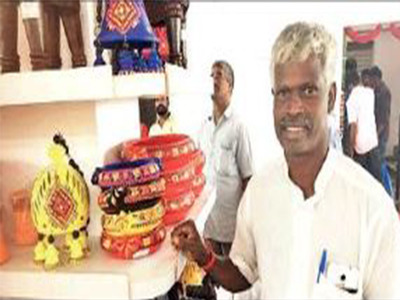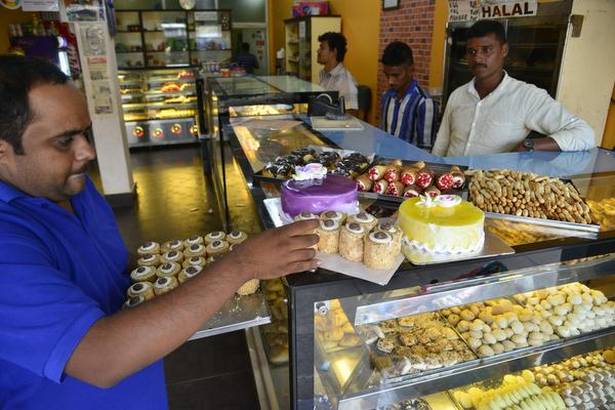Within the Mysore court in the late 1800s, the Royal Carnatic Orchestra served as an important cultural cross-breeding ground between Indian and Western classical music. Today, it faces an uncertain future

In 2015, neuroscientist and classical musician Deepti Navaratna was exploring intercultural encounters while studying at the New England Conservatory, Boston. As she engaged with chamber ensembles and jazz trios, she realized that there was a deep history of such musical hybridity in Mysuru, right next to her hometown of Bengaluru—the Royal Carnatic Orchestra of the Mysore court had served as a site for one of the first encounters between Western classical music and the Carnatic repertoire more than 100 years ago.
“This was one of the first East-meets-West experiments in the country, the legacy of which is being carried forward even today by the Mysuru Police Band, under the official banner of the Mysuru Government Orchestra,” Navaratna says.
When Navaratna shifted to Bengaluru, nearly a year and a half ago, to take up the post of regional director of the Indira Gandhi National Centre for the Arts, she decided to seek out present and erstwhile musicians of the police band. In the past couple of months, she has conducted extensive interviews, poring over records and documents related to the band and hearing private recordings, as well as those in the palace archives and the Karnataka state archives, to trace the history of this orchestra.
“At one point of time, Carnatic composers were writing and orchestrating exclusively for the orchestra. They had a unique repertoire, which could be grouped under Carnatic chamber style of music, with exotic instruments such as the trombone and xylophone being played,” says Navaratna. “I wanted to know more about why, from being a trendsetter, the orchestra is now excluded from mainstream Carnatic music practice and discourse.” Her quest for information has now taken the shape of a project—one which seeks to rekindle a conversation about the Mysuru Police Band and its legacy. In the course of time, Navaratna hopes to publish a book and release a DVD containing old recordings and vintage performances of the erstwhile Royal Carnatic Orchestra.

“The endeavour is also to explore newer performance contexts for the band, so that this unique repertoire is not lost,” she says.
Navaratna’s research sheds light on the multicultural nature of the Mysore court. For instance, during the reign of Nalwadi Krishna Raja Wadiyar IV, from 1894-1940, the court had several Western musicians in residence who spent their entire lives there, composing, teaching and participating in various activities of the orchestra. There were pianists from London and a stream of instrumentalists from Eastern Europe. The Carnatic musicians, who came from diverse class and caste backgrounds, learnt the piano, while the pianists learnt the ragas. “They all thrived in this cross-pollinating environment. And the interesting part is that these musical encounters were very sustained, unlike the symptomatic ones today, when musicians meet to make a series of concerts together and that’s it,” she says.
Unlike the modern idea of experimentation, where Indian classical meets jazz in a mainstream imagination of fusion, this was a meeting of the most sophisticated forms of classical music—where Western art music engaged with its Indian art counterpart, or the court music of southern India. One example is the cultural syncretism in the Mysore state anthem, Kayau Sri Gowri, composed by the court poet Basavappa Shastry (1843-91). The song, an ode to the tutelary deity of the royal family of Mysore, was written in chaste Kannada but was set to a duplex meter waltz and composed to a simple harmony on the Ionian scale. It was tuned and orchestrated with a Western flavour for a Carnatic ensemble of strings, brass and percussion.

The cultural amnesia around the orchestra is also a reflection on the sociopolitical transformation in southern India. “It shows how the cultural histories of Carnatic music, post-independence, have strategically forgotten to document the presence of these European composers and local musicians. More importantly, this reflects on what value was, and still is, placed on purity versus hybridity as a culture,” says Navaratna. Today, the orchestra, which boasted of 150 members in its heyday, has been relegated to the status of a state band with 30 members. Conversation with the musicians is never centred on the present—it is either about the uncertain future looming ahead or the splendid past, when their grandfathers and great-grandfathers performed for royalty. For instance, the grandfather of the current band leader, H. Tandavamurthy, played for Nalwadi Krishna Raja Wadiyar IV. Today, they reclaim some of that legacy when they don their finery for the Republic Day parade or during the Mysuru Dasara.
They wonder why, at a time when Carnatic music is being celebrated with such enthusiasm, they have been forgotten. “Our music is not considered classical enough. We have many exotic instruments from the Middle and the Far East, but there are no players. Many posts in the band are thus lying vacant,” says a multi-percussionist from the band who didn’t want to be named. Incidentally, he is one of the few remaining xylophone players in the country.
Many, like Tandavamurthy, an accomplished violinist, get opportunities as soloists or accompanists for Carnatic classical performances. “But there are very few platforms for us to perform together as a band. We are only called for state and official formalities, where the music we play is not adored as an ‘art’,” he says.
Meanwhile, Navaratna hopes that her efforts will create a new dialogue around these musicians, with people wanting to hear more of this repertoire. Who knows, the Royal Carnatic Orchestra just might play again, in all its splendour.
source: http://www.livemint.com / Livemint / Home> Leisure / by Avantika Bhuyan / May 11th, 2018












